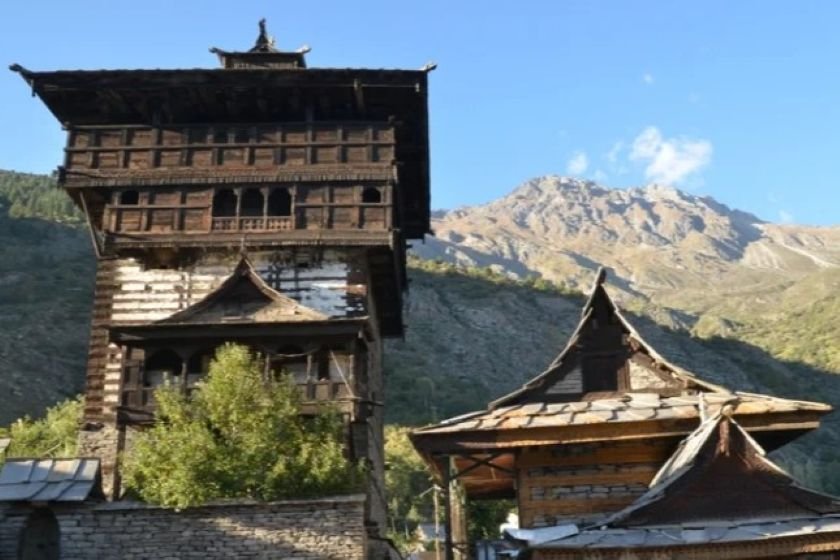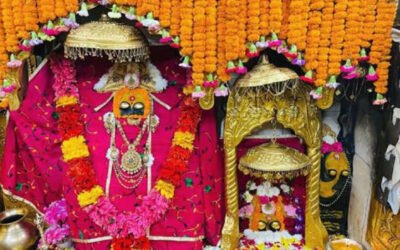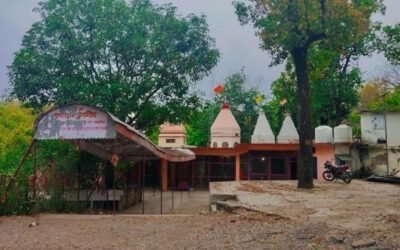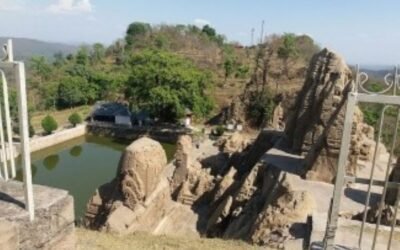Where the goddess of desire guards the gateway to Kinnaur’s soul
Perched atop the ancient Kamru Fort in the village of Kamru, near Sangla in the Baspa Valley, the Kamakhya Devi Temple is a sacred Shakti Peetha and one of the oldest temples in Himachal Pradesh. Dedicated to Goddess Kamakhya, the embodiment of feminine energy and desire, this temple is a spiritual cornerstone of the Bushahr dynasty and a guardian of the Kinnauri cultural ethos.
🌄 Location & Accessibility
- Location: Kamru Village, ~2 km from Sangla, Kinnaur District, Himachal Pradesh – 172106
- Altitude: ~2,900 meters
- By Road: 214 km from Shimla; accessible via NH-5 and local roads to Sangla
- By Air: Shimla Airport (~267 km)
- By Rail: Shimla (~244 km); further travel by road
- On Foot: A 15–20 minute uphill walk from Kamru village through narrow cobbled paths and prayer flag-lined stairways
🕉️ Deity & Worship
The temple is dedicated to Goddess Kamakhya, a powerful form of Shakti associated with fertility, desire, and cosmic creation. She is worshipped here as the kuldevi (clan goddess) of the Bushahr royal family, and her blessings are invoked for protection, prosperity, and spiritual fulfillment.
The goddess is worshipped in the form of three pindis, representing Maha Kali, Maha Lakshmi, and Maha Saraswati.
Devotees offer red flags, coconuts, and sweets, and the temple is especially known for fulfilling wishes of childless couples and those seeking justice. Rituals include offering of rice, flowers, and ghee lamps, and the royal priest (pujari) performs daily aartis and seasonal ceremonies. Entry into the sanctum is traditionally restricted to male priests, while devotees offer prayers from the outer sanctum.
🏛️ Architecture & Setting
The Kamakhya Devi Temple sits within the five-story Kamru Fort, a wood-and-stone marvel built in Kath-Kuni style, with slate roofs, carved balconies, and a watchtower-like silhouette. The temple itself is housed on the top floor, crowned with a golden idol of the goddess, believed to have been brought from Assam’s Kamakhya Temple, linking the two sacred sites.
The fort-temple complex is surrounded by apple orchards, pine forests, and panoramic views of the Baspa Valley, making it a place where history, nature, and divinity converge.
📜 Mythological Significance
According to legend, the idol of Kamakhya Devi was brought from Nilachal Hill in Assam, home to the original Kamakhya Shakti Peetha, and installed in Kamru by the founders of the Bushahr dynasty. The goddess is believed to have chosen Kamru as her Himalayan abode, and her presence sanctifies the fort as a seat of divine and royal authority.
The temple is also associated with Tantric traditions, and the goddess is revered as the granter of desires and remover of obstacles, especially for those on the path of spiritual awakening.
🎉 Festivals & Celebrations
- Navratri: Celebrated with special pujas, folk dances, and community feasts
- Fulaich (September): A flower festival honoring the goddess and ancestral spirits
- Royal Ceremonies: The Bushahr kings once performed coronation rituals here, seeking the goddess’s blessings
- Daily Worship: Morning and evening aartis, incense offerings, and recitation of Shakta hymns
🏞️ Nearby Attractions
- Bering Nag Temple, Sangla: A Nāga shrine dedicated to Lord Shiva
- Chitkul Village: The last inhabited village near the Indo-Tibetan border
- Baspa River & Valley Trails: Ideal for nature walks and riverside meditation
- Rakchham & Batseri Villages: Scenic hamlets with rich devta traditions
🙏 Spiritual Experience
The Kamakhya Devi Temple of Kamru is not just a shrine—it is a crown of devotion atop a fortress of faith, a place where Shakti watches over the valley with fierce grace. As you climb the stone steps, with the wind carrying the scent of cedar and incense, you feel the goddess’s presence in every carved beam and fluttering flag. It is a temple where desire becomes devotion, and the soul bows to the mountain and the mother alike.




